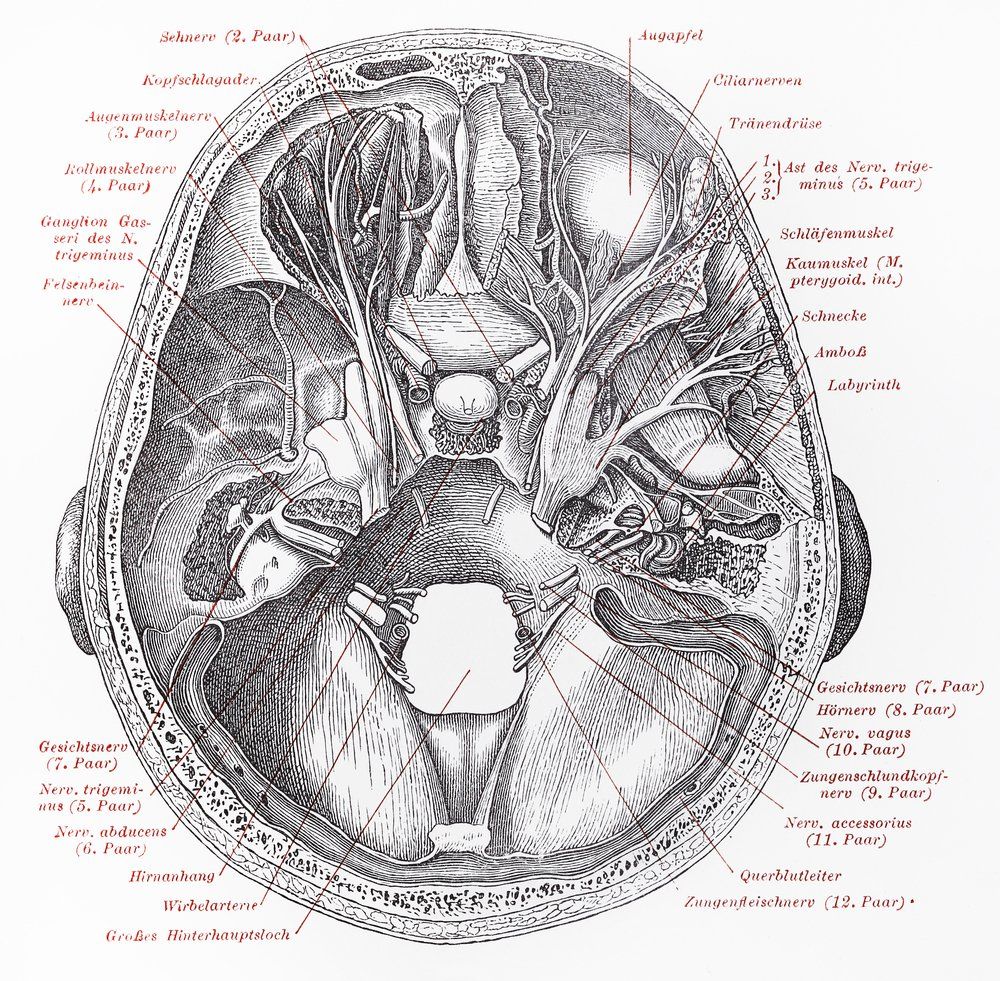Article
Sphenopalatine Ganglion Block for Migraine?
The SPG is a promising target for migraine treatment, but robust evidence of efficacy for routine use of noninvasive device–mediated SPG blockade is needed.
“©Niku/Shutterstock.com”

Recently, sphenopalatine ganglion (SPG) block has been generating interest as another extracranial nerve block that may be used as part of treatment for migraine. The SPG is a group of neurons within the pterygopalatine fossa that lies behind the nasopharynx posterior to the middle turbinate and inferior to the sphenoid sinus.1 The SPG contains sensory and sympathetic fibers but is largely a parasympathetic structure and the largest extracranial parasympathetic ganglion of the head.
The SPG receives parasympathetic innervation from the superior salivatory nucleus in the pons and projects ipsilaterally to extracerebral and intracerebral arteries, the lacrimal gland, nasal mucosa, conjunctiva, and Muller muscle in the upper eyelid.2 The SPG is crucial for mediating the cranial autonomic symptoms produced by primary headache disorders, particularly trigeminal autonomic cephalalgias.
SPG activation in these disorders produces unilateral eye redness, rhinorrhea, eyelid edema, facial flushing/sweating, ear fullness, and ptosis. It also has been proposed that because the SPG provides parasympathetic input to cranial blood vessels, its stimulation, through the superior salivatory nucleus, causes plasma protein extravasation in the dura and may activate meningeal nociceptors and trigger a migraine through neurogenic inflammation.3 This provides a rationale for targeting the SPG as a potential migraine treatment.
SPG blockade was pioneered in 1908. Among primary headache disorders, it has been reported most often in the treatment of cluster headaches. SPG blockade can be performed topically by placing an anesthetic-soaked cotton-tipped applicator at the middle turbinate, by transnasal injection with endoscopic guidance, by lateral-infratemporal injection with fluoroscopic guidance, or by oral injection routes.1 Recently, several new devices have been marketed as a noninvasive way to deliver anesthetics topically to the nasal mucosa for SPG blockade.
To date, there is only 1 trial investigating the role of SPG blocks in the treatment of migraine. A recent small, industry-funded, placebo-controlled, randomized clinical trial evaluated an SPG block device, the Tx360®, as a treatment for chronic migraine.4
The trial randomized 38 subjects with International Classification of the Headache Disorders 2 criteria for chronic migraine to either treatment with 0.5% bupivacaine or placebo (normal saline) with the device. The Tx360® device allows a small flexible catheter to advance intranasally below the middle turbinate and 0.3 mL of anesthetic or saline to be sprayed topically on the mucosa superficial to area of the SPG. In this trial, both groups received bilateral treatment twice weekly for 6 weeks. The primary outcome of the study compared numeric rating scale scores (NRS) following treatment at 15 minutes, 30 minutes, and 24 hours posttreatment with pretreatment baseline.
The results of the study showed that the treatment group had a significant decrease in pain at 15 minutes, 30 minutes, and 24 hours posttreatment (P<.001). In addition, the NRS showed a mild drop from a pooled baseline of 3.18 to 2.53 at 15 minutes, 2.41 at 30 minutes, and 2.85 at 24 hours in the active-treatment group.
Comparison between the two groups over the 6-week time course did not show a statistically significant decrease in NRS scores from baseline; however, the authors noted a trend toward improvement. No significant change in utilization of acute migraine medication was noted over the course of treatment between the two groups. There were no serious adverse effects in either group. Headache impact test scores (HIT-6) were lower in the active-treatment group by -4.5 points (P=.005; 95% CI, 0.29 to -3.38).
In a follow-up study, no significant differences in headache days, average pain, acute medication use, or quality-of-life measures were seen at 1 and 6 months posttreatment between active treatment and placebo.5 However, a trend of improvement in these areas was noted in the active-treatment group as compared with baseline.
The study had several limitations, including small sample size and difficulty with true blinding. Although the acute treatment results were statistically significant, the small magnitude of pain improvement combined with the feasibility of twice weekly procedures is of uncertain clinical relevance.
It is possible that a subgroup of migraineurs with more prominent cranial autonomic features may have a more robust response, and this would be an interesting future area of study. In addition, comparative studies with simple intranasal lidocaine spray, which has several small previous studies showing effectiveness in acute migraine treatment,6,7 would be important, because it is unclear from the current literature whether a directed device is truly required.
Bottom line: The SPG is a promising target for migraine treatment. However, noninvasive device–mediated SPG blockade currently lacks robust evidence of efficacy for routine use as a migraine preventative and further study is warranted.
References:
1. Piagkou M, Demesticha T, Troupis T, et al. The pterygopalatine ganglion and its role in various pain syndromes: from anatomy to clinical practice. Pain Pract.2012;12:399-412.
2. Khan S, Schoenen J, Ashina M. Sphenopalatine ganglion neuromodulation in migraine: what is the rationale? Cephalalgia. 2014;34:382-391.
3. Burstein R, Jakubowski M. Unitary hypothesis for multiple triggers of the pain and strain of migraine. J Comp Neurol. 2005;493:9-14.
4. Cady R, Saper J, Dexter K, Manley HR. A double-blind, placebo-controlled study of repetitive transnasal sphenopalatine ganglion blockade with Tx360® as acute treatment for chronic migraine. Headache. 2015;55:101-116.
5. Cady RK, Saper J, Dexter K, et al. Long-term efficacy of a double-blind, placebo-controlled, randomized study for repetitive sphenopalatine blockade with bupivacaine vs saline with the Tx360® device for treatment of chronic migraine. Headache. 2015 Mar 31. doi:10.1111/head.12546. [Epub ahead of print]
6. Maizels M, Scott B, Cohen W, Chen W. Intranasal lidocaine for treatment of migraine: a randomized, double-blind, controlled trial. JAMA. 1996;276:319-321.
7. Maizels M, Geiger AM. Intranasal lidocaine for migraine: a randomized trial and open-label follow-up [published correction appears in Headache. 1999;39:764]. Headache.1999;39:543-551.




